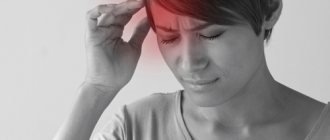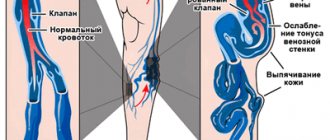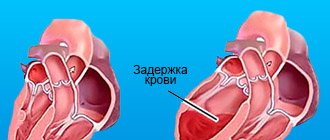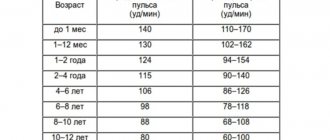Life is a continuous process of exchange, transformation of substances and energy. A variety of pathological factors can disrupt this process, which is accompanied by disorders of the organs and systems of the body. The disease develops. If in these cases the body’s compensatory reactions are exhausted or do not have time to react, a threat to its vital functions arises (terminal state).
- Terminal states
- Stages and stages of resuscitation
- Treatment after resuscitation
Sudden cardiac arrest on the street: what to do before the ambulance arrives?
Resuscitation measures are carried out after establishing a state of clinical death, the main signs of which are: absent breathing and heartbeat, unconsciousness, dilated pupils, lack of response to external stimuli. To reliably determine the severity of the situation, it is necessary to determine the following indicators of the victim:
- check the pulse in the carotid arteries of the neck at the jaw angle - when the pressure drops to less than 60-50 mm Hg. Art. the pulse on the radial artery of the inner surface of the hand is not detected;
- examine the chest, check for spontaneous breathing movements;
- approach the victim’s face to check breathing, determine inhalation and exhalation (air movement assessment);
- pay attention to the color of the skin - cyanosis and severe pallor appear when breathing stops;
- check consciousness - lack of response to stimuli indicates coma.
Cardiopulmonary resuscitation according to the new standards is carried out only in two cases. You should start performing CPR only after determining your pulse and breathing.
If the pulse is clearly detected for 10-15 seconds and atonal breathing is disturbed with episodes of convulsive sighs, artificial respiration is required. To do this, you need to take 10-12 breaths “mouth to mouth” or “mouth to nose” over the course of a minute. While waiting for an ambulance, you need to measure your pulse every minute; if it is absent, CPR is indicated.
If spontaneous breathing and pulse fail, a set of resuscitation measures is indicated strictly according to the algorithm.
Consciousness testing is carried out according to the following principle:
- Address the victim loudly. Ask what happened and how he feels.
If there is no response, use painful stimuli. Pinch the top edge of the trapezius muscle or apply pressure at the base of the nose.- If there is no reaction (speech, twitching, attempts to defend yourself with your hand) - there is no consciousness, you can move on to the next stage.
Breath test:
- Tilt your head back (holding it by the back of your head and chin) and open your mouth. Inspect it for foreign bodies. If they are there, remove them.
- Bend towards your face and for 10 seconds. check your breathing. You should feel it with your cheek and hear and see the movements of your chest. Normally, 2-3 breaths are sufficient.
- If there is no breathing or only 1 breath is felt (which can be considered its absence), we can assume the cessation of a vital function.
In such a case, it is necessary to call an ambulance and begin performing resuscitation measures in case of cardiac and respiratory arrest.
Terminal states
With the help of intensive therapy and the use of resuscitation measures, in many cases it is possible to prevent and eliminate the energy and structural deficit that develops in the body during terminal conditions, and save it from death.
Intensive therapy is a set of methods for temporary artificial replacement of vital body functions, aimed at preventing the depletion of adaptive mechanisms and the occurrence of a terminal condition.
Reanimatology is the science of reviving the body; prevention and treatment of terminal conditions (according to V.A. Negovsky).
For human life to exist, it is necessary that oxygen continuously enters and is consumed by cells and carbon dioxide is released from it. These processes ensure the coordinated functioning of the respiratory and circulatory organs under the control of the central nervous system. Therefore, their defeat leads to death (“the gates of death” - as defined by the ancients - the lungs, heart and brain).
Stopping vital activity (death) can occur suddenly (in accidents) or predictably, as a natural consequence of old age or an incurable disease. During a long process of dying, the following stages are noted.
Peredagonia . The physiological mechanisms of the body’s vital functions are in a state of deep exhaustion:
- the central nervous system is depressed, possibly comatose;
- heart activity is weakened, the pulse is thready, systolic blood pressure is reduced to a more critical level (70 mm Hg);
- external breathing is weakened, ineffective: tidal volume and frequency are inadequate;
- the functions of parenchymal organs are impaired.
Peredagonia can take several minutes, hours, or even days. During this time, the patient's condition worsens even more and ends with a terminal pause. The patient loses consciousness, blood pressure and pulse are not determined; breathing stops, reflexes are absent. The terminal pause lasts up to a minute.
The next stage of dying is agony (struggle). Due to the depletion of higher-order vital activity centers (CNS), the bulbar centers and reticular formation go out of control (activate). The patient's muscle tone and reflexes are restored, external breathing appears (random, with the participation of auxiliary muscles). The pulse is palpated above the main arteries, vascular tone can be restored - systolic blood pressure increases to 50 - 70 mm Hg. However, at this time, metabolic disorders in the body's cells become irreversible. The last reserves of energy accumulated in high-energy connections quickly burn out and after 20 - 40 seconds clinical death occurs.
In a number of pathological situations (drowning, electric shock and lightning, being hit by a car, strangulation asphyxia, myocardial infarction, etc.), clinical death can befall the victim unexpectedly, without preliminary manifestations of dying.
The main signs of clinical death:
- absence of pulsation over the main arteries (carotid and femoral);
- persistent pupil dilation with absence of photoreaction;
- lack of spontaneous breathing.
Auxiliary signs:
- change in skin color (dead gray or bluish);
- lack of consciousness;
- lack of reflexes and loss of muscle tone.
An important factor influencing the effectiveness of resuscitation in case of clinical death is the ambient temperature and the duration of dying. In case of sudden cardiac arrest, clinical death in conditions of normothermia lasts up to 5 minutes, at sub-zero temperatures - up to 10 minutes or more. A long period of dying significantly worsens the effectiveness of resuscitation, reducing the period of clinical death. Biological death occurs when, as a result of irreversible changes in the body, and above all, in the central nervous system, a return to life is impossible.
Stages of cardiopulmonary resuscitation according to new standards
It is extremely important to follow the correct procedure for resuscitation measures. According to the latest medical protocols, to save the victim it is necessary to adhere to the following algorithm:
- A - ensure airway patency for oxygenation, eliminate blockage of the lumen of the pharynx and trachea;
- B - perform breathing using the “mouth to mouth” or “mouth to nose” method;
- C - restore blood circulation using indirect massage.
Technique and procedure for performing indirect cardiac massage and artificial ventilation of the lungs
- It is important to maintain safety; before starting CPR, the person must be placed on a rigid, stable and solid surface or floor.
- After this, tilt your head to the side, open your mouth slightly and make sure that the airway is not blocked. If obstruction is detected, clear the airways using improvised means (handkerchief or napkin).
- For effective artificial respiration, perform the Safar maneuver - tilt your head back, push your jaw forward and upward, and open your mouth in one movement.
- If there are signs of a spinal fracture in the neck area, just move your jaw.
- The resuscitation complex begins with 30 compressions of the sternum, which are performed by one person rhythmically without breaks.
- To do this, you need to place your right hand with your palm resting on the lower part of the sternum in the center, place your left hand on top of your right hand and interlace your fingers.
To perform a heart massage, your arms should be straight, not bent at the elbow joints.- Perform 100-120 compressions per minute with rhythmic compression of the sternum 5-6 cm deep, until the chest is completely expanded after compression.
- After 30 compressions, exhale 2 times into the victim’s mouth or nose for 1 second.
- When breathing using the mouth-to-mouth method, you must close your nostrils with your fingers before exhaling.
- During two exhalations, you should look at the chest: straightening and lifting indicate correct execution.
- If the chest does not rise or fall, it is necessary to check whether the airways are passable, and you may need to repeat Safar.
- During CPR, be sure to check your pulse every 2 minutes. Resuscitate without stopping for up to 30-40 minutes.
Criteria for the effectiveness of activities
With timely assistance, the chance of saving a person increases. To do this, it is important to strictly follow the rules of cardiopulmonary resuscitation. The effective implementation of the CPR complex is indicated by:
- the appearance of a pulse in the carotid arteries - to make sure that the pulse is maintained, cardiac massage can be stopped for 3-5 seconds;
- return of the pupillary reaction to a light stimulus - narrowing indicates an enrichment of oxygenated blood in the brain;
- the appearance of spontaneous breathing with full, steady inhalation and exhalation, without episodes of convulsive inhalations followed by cessation (apnea);
- disappearance of blueness of the skin of the face, lips, hands;
After the heartbeat and breathing are restored, the resuscitation complex is stopped, but the victim must remain in the field of view of the resuscitator until the doctor arrives
Common mistakes in providing assistance
It should be remembered that incorrectly provided first aid often causes more harm than its absence. The following erroneous recommendations and myths are often found on the Internet (the rule of four “NOT”):
- Do not check your breath with a mirror or feather - you waste time looking for it, the humidity outside may interfere with your breathing, and when using a feather, the wind can interfere with the reliability of the result. In such a situation, you will mistakenly consider the dead person to be alive.
Do not check the pupillary reflex - you need to be able to do this correctly and not with the help of a regular flashlight. If a person is alive, too bright light in certain diseases can damage the retina. Finally, there are neurological disorders in which this reflex will not work in a person with preserved vital functions.- You shouldn't do a precordial blow. This requires appropriate practice, moreover, this method has not been proven in terms of effectiveness, and in some cases it can cause even greater harm.
- Do not perform mechanical ventilation without protection (without a film valve) on strangers - there is a high risk of transmission of infection. If the chest does not rise during artificial ventilation, it should be assumed that air is passing into the stomach, or the airways are blocked. In the first case, limit yourself to NMS; in the second, clean your mouth or use the Heimlich maneuver.
Signs of clinical death
Any capable person facing clinical death can become a resuscitator. Signs of clinical death include:
- Loss of consciousness and complete relaxation of a person (no muscle tone, reflexes are not evoked);
- Wide pupils that do not react to light (if you shine a flashlight into the eye of a living person, the pupil will instantly narrow, which will not happen in the case of a person’s clinical death);
- The skin will acquire an earthy tint (ash-gray color), or will be pale with a bluish tint;
- Absence of pulse in the carotid arteries. To do this, you need to feel the pulse on both sides of the neck;
Feeling the pulse in the carotid arteries. First, you need to find the thyroid cartilage with your fingers (in men, the Adam's apple), and then move your fingers a couple of cm to the side. - Stopping breathing (the chest will not rise, exhalation will not be heard).
Emergency assistance from the medical team: what is the algorithm of action?
To provide emergency care in case of sudden cardiac arrest, a special cardiology team arrives on site, whose task is to carry out advanced resuscitation measures and immediately transport the patient to the hospital. It works according to a protocol that includes the following sequence of actions:
- Checking vital signs and making a diagnosis. For this purpose, a wider arsenal of equipment is used, including an electrocardiograph. It is necessary to exclude other causes of clinical death, such as bleeding or blockage.
Resumption of conductivity of the upper respiratory tract. To ensure maximum oxygen supply, they are intubated.- Resuscitation measures are carried out according to the same algorithm as indicated above, but for mechanical ventilation they use breathing masks, an Ambu bag or a ventilator.
- In the presence of atrial fibrillation or ventricular fibrillation on the ECG, the question of using defibrillation is raised.
- Drug support is provided by intravenous or intracardiac administration of drugs such as Adrenaline (1 ml 0.1% in 19 ml NaCl 0.9%) and Cordarone (in the presence of arrhythmias, 300 mg IV).
Modern CPR protocols
In 2005, international recommendations (International Liaison Committee on Resuscitation) for CPR were adopted.
2005 Cardiopulmonary Resuscitation Protocol
The changes mainly affected the primary intensive care complex. They are aimed at simplifying the CPR procedure for resuscitators. To perform CPR, the rescuer places his hands in the center of the chest. The inhalation/compression ratio should be 2:30, regardless of the number of people performing CPR. Each rescue breath is delivered in 1 second, not 2 seconds;
At the beginning of CPR, two “rescue” breaths are not given, but heart compression is immediately started. Do not delay defibrillation if CPR is performed in a hospital setting. If the heart rhythm is not restored after defibrillation, a series of three repeated shocks of higher power is not performed, but cardiac massage is immediately started. Further defibrillation attempts are made only after 2 minutes of resuscitation (ie after approximately 5 cycles of breathing/compression 2:30).
If there is any doubt as to whether the rhythm is asystole or small-wave ventricular fibrillation, defibrillation should not be attempted. Instead, continue chest compressions and artificial respiration. The initial defibrillation energy of biphasic defibrillators is 150-200 J. For the second and subsequent discharges - 150-360 J. The energy of monophasic defibrillators is 360 J for the first and subsequent discharges.
If the cause of cardiac arrest is proven or suspected to be pulmonary embolism (PE) and standard CPR is ineffective, thrombolytic therapy should be considered. If thrombolytics were used, CPR should be performed for 60-90 minutes.
CPR in patients with hypothermia
Attention. It must be remembered that patients whose death occurred as a result of hypothermia, or the dying process was accompanied by the development of hypothermia (for example, drowning in cold water), require longer (at least 60 minutes) resuscitation measures. Moreover, hypothermia must be eliminated during resuscitation.
Use active warming if body temperature < 32°C. Defibrillation is not effective until body temperature rises to 30-32°C.








